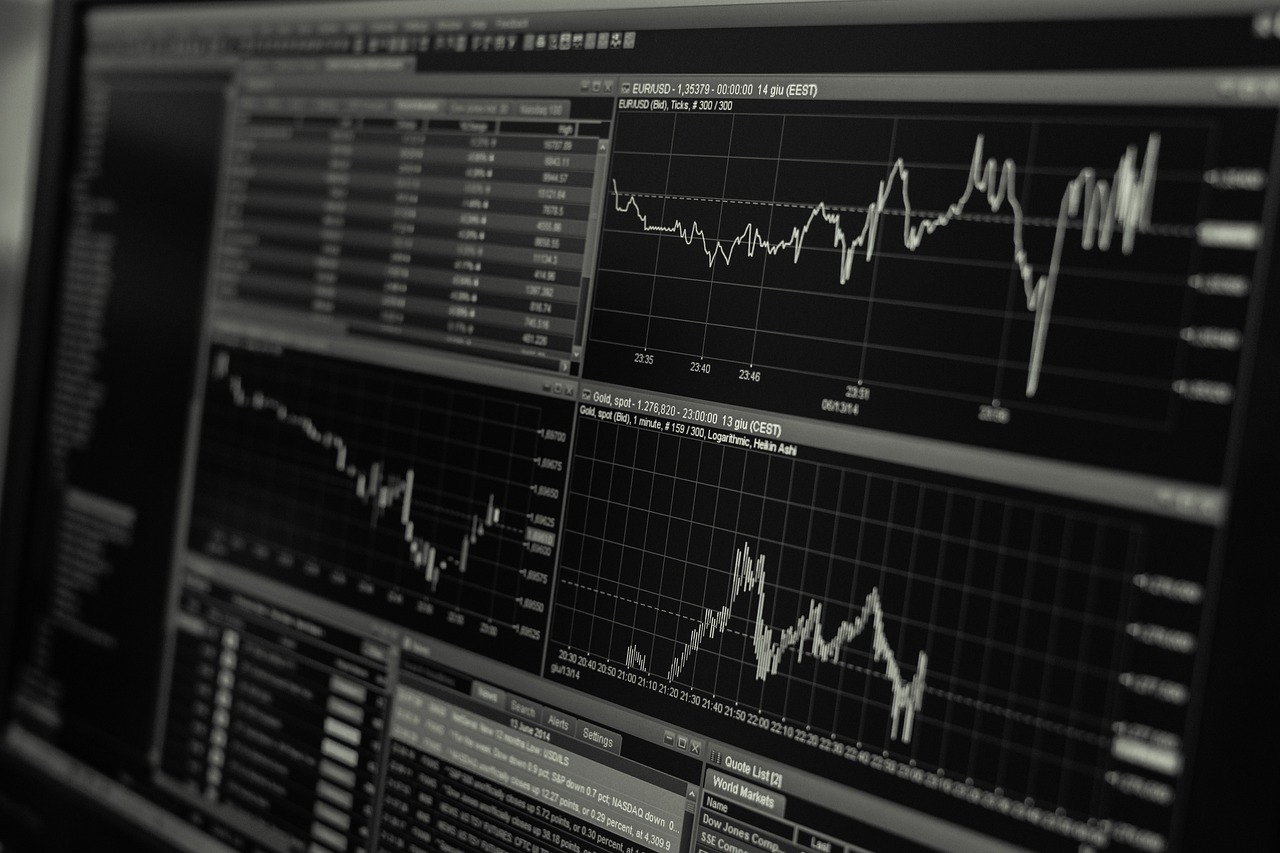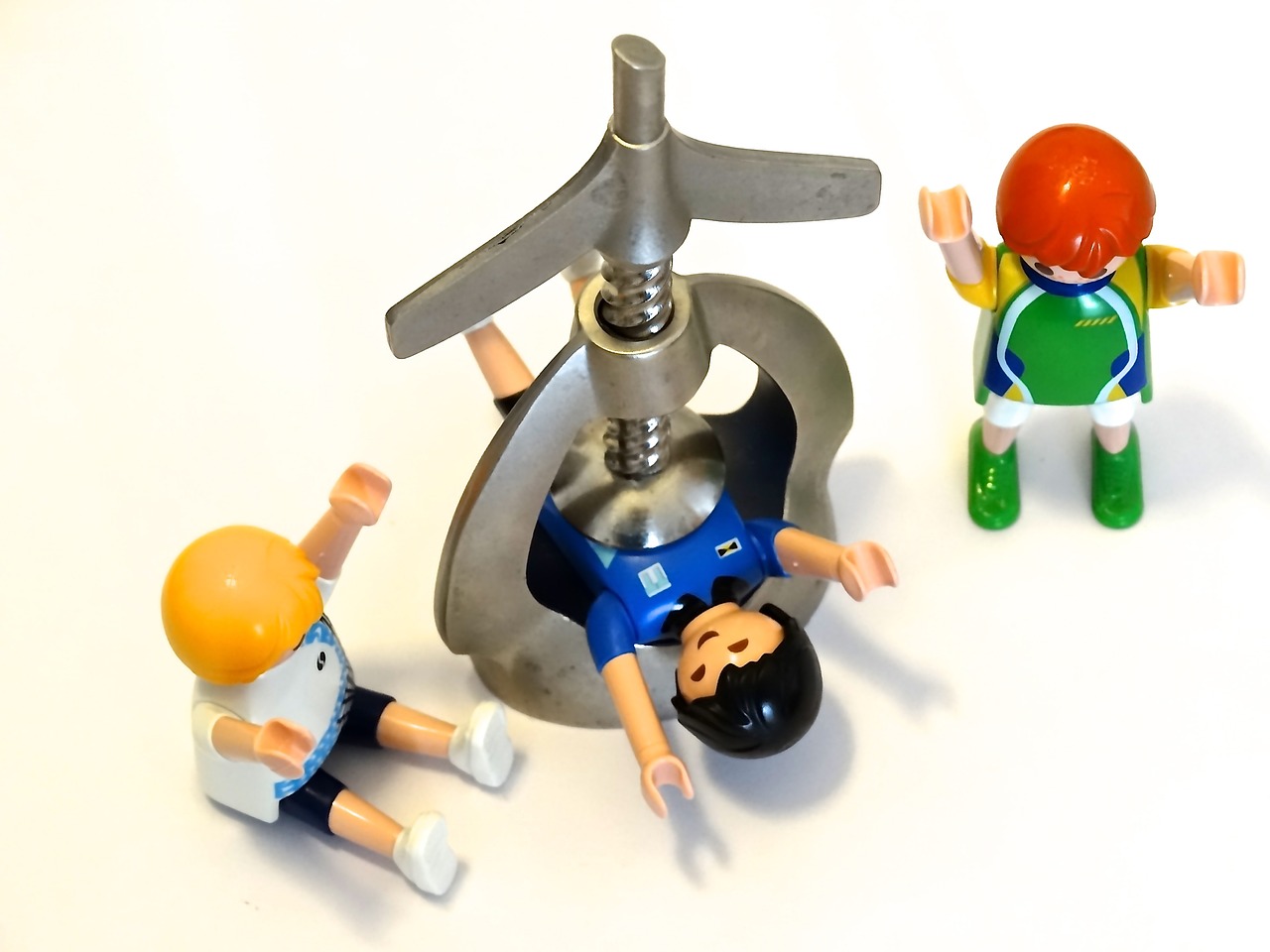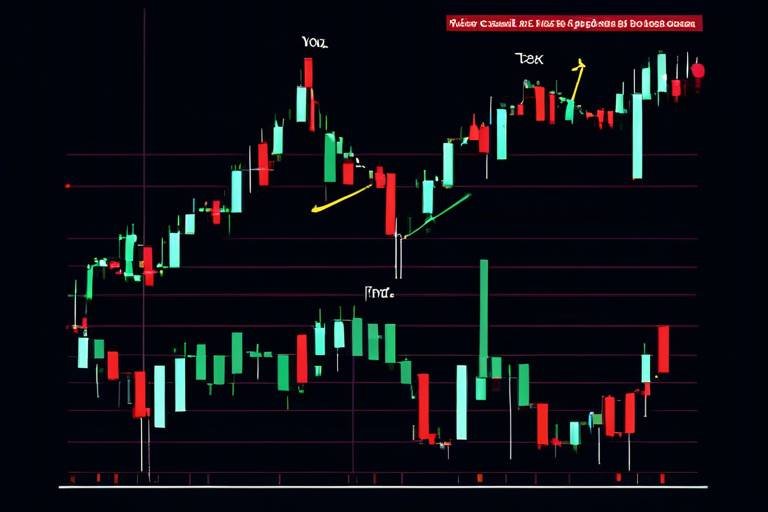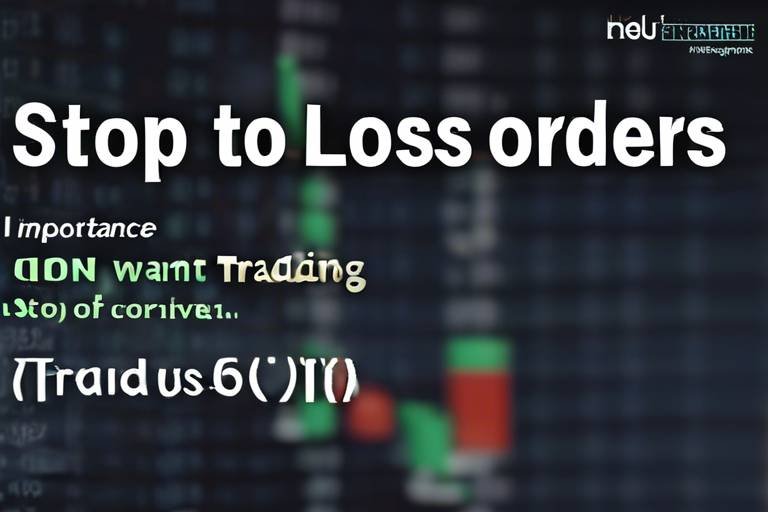The Basics of Trading Psychology
Trading isn't just about numbers and charts; it’s an intricate dance of **emotions** and **mental states**. Understanding the nuances of trading psychology can be the difference between success and failure in the markets. Think of trading like a roller coaster ride—there are thrilling highs and gut-wrenching lows. How you react to these ups and downs can shape your trading journey. In this article, we'll explore the essential elements of trading psychology, highlighting how your feelings and mindset influence your decisions and performance. By grasping these concepts, you can significantly boost your trading success rate.
At the heart of trading psychology lies the understanding that **emotions** play a pivotal role in decision-making. Just like a skilled chef needs to balance flavors, a trader must balance their emotions to navigate the volatile market landscape. Fear and greed often take center stage in this drama, leading to impulsive decisions that can derail even the most carefully laid plans. For instance, have you ever found yourself holding onto a losing position longer than you should, hoping it will turn around? That’s fear talking. Conversely, have you jumped into a trade because everyone else was doing it? That’s greed at play. Recognizing these feelings is the first step toward **managing your responses** and making more rational choices.
But how do we develop a strong trading mindset? It’s not just about having a good strategy; it’s about cultivating traits like **discipline**, **patience**, and **resilience**. Imagine you’re training for a marathon. You wouldn’t just run a few laps and expect to win, right? You’d need to build your stamina, stick to a training schedule, and push through the tough days. Similarly, in trading, a strong mindset is essential for navigating market challenges and maintaining focus on your goals. This article will delve into the characteristics of a successful trader's mentality, emphasizing that trading is as much a mental game as it is a technical one.
Now let’s dive deeper into the **importance of discipline**. Discipline is the backbone of successful trading; it’s what keeps you grounded when the market throws curveballs. Without discipline, even the best strategies can fall apart. Think of discipline as your trading GPS—it helps you stay on course and avoid detours that can lead to losses. By adhering to your trading plan and strategies, you can prevent impulsive decisions that often arise from emotional turmoil. This article will explore how maintaining discipline can enhance your overall trading performance.
Creating a solid **trading plan** is fundamental for disciplined trading. A well-structured plan acts like a roadmap, guiding you through the complexities of the market. It should include your trading goals, risk tolerance, entry and exit strategies, and criteria for selecting trades. Below is a simple table outlining the key components of an effective trading plan:
| Component | Description |
|---|---|
| Trading Goals | Define what you want to achieve (e.g., monthly profit targets). |
| Risk Tolerance | Determine how much risk you are willing to take on each trade. |
| Entry Strategy | Outline the criteria for entering a trade. |
| Exit Strategy | Specify when to close a trade, both for profits and losses. |
Sticking to your strategy during volatile market conditions is crucial for long-term success. It’s easy to get swept up in the chaos of market fluctuations, but remember: the best traders are those who can stay calm and stick to their predetermined plans. We’ll discuss techniques to resist the temptation of deviating from your trading plan, ensuring that you remain focused on your long-term objectives.
Stress and anxiety are common companions in the trading world. The pressure to make profitable trades can be overwhelming, leading to poor decision-making. This article will provide you with strategies for managing these feelings, enabling you to remain calm and focused during high-pressure situations. Think of it like a pressure cooker; without proper management, it can explode. Learning how to control your stress levels will help you keep your cool, even when the market heats up.
In conclusion, understanding the basics of trading psychology is essential for anyone looking to improve their trading performance. By recognizing the role of emotions, developing a strong trading mindset, and managing cognitive biases, traders can navigate the complexities of the market with greater ease and confidence.
- What is trading psychology? Trading psychology refers to the emotional and mental aspects that influence trading decisions and performance.
- How do emotions affect trading? Emotions like fear and greed can lead to impulsive decisions, impacting overall trading success.
- Why is discipline important in trading? Discipline helps traders adhere to their plans and strategies, preventing emotional decision-making.
- What should be included in a trading plan? A trading plan should outline goals, risk tolerance, entry and exit strategies, and criteria for selecting trades.
- How can I manage stress while trading? Techniques such as mindfulness, proper planning, and maintaining a balanced lifestyle can help manage stress and anxiety.

The Role of Emotions in Trading
When it comes to trading, emotions are like the wind that can either propel your ship forward or capsize it entirely. The emotional landscape of trading is often turbulent, filled with waves of fear and greed that can cloud judgment and lead to impulsive decisions. Have you ever found yourself holding onto a losing trade longer than you should, hoping it will turn around? That’s fear talking, and it can be a trader’s worst enemy. On the flip side, the thrill of a winning trade can lead to overconfidence, pushing you to take risks that may not align with your trading strategy.
Understanding and recognizing these emotions is the first step toward mastering your trading psychology. By acknowledging how these feelings influence your decisions, you can learn to manage them effectively. For instance, when you feel that rush of excitement after a successful trade, pause and reflect. Are you feeling too confident? Will this lead you to make rash decisions? By asking yourself these questions, you can create a buffer against the emotional rollercoaster that trading often brings.
Moreover, it’s essential to develop strategies that help you cope with these emotions. Here are a few methods to consider:
- Self-awareness: Keep a trading journal to track your emotions alongside your trades. This can help you identify patterns in your emotional responses.
- Mindfulness: Practice mindfulness techniques such as meditation or deep breathing exercises to maintain your composure during stressful trading scenarios.
- Set Limits: Establish clear stop-loss orders to prevent emotional decision-making when a trade goes against you.
By implementing these strategies, you can create a more balanced approach to trading. Remember, successful traders don’t eliminate emotions; they learn to manage them. It’s about finding that sweet spot where you can leverage your emotional intelligence to make informed decisions, rather than letting fear and greed drive you off course.
In summary, the role of emotions in trading cannot be understated. They are a double-edged sword that can either enhance your trading performance or lead you down a path of destruction. By developing a keen awareness of your emotional states and implementing effective management strategies, you can navigate the challenges of trading with greater confidence and success.

Developing a Trading Mindset
When it comes to trading, having the right mindset is like having a sturdy ship in the stormy seas of the financial markets. It’s not just about knowing the technicalities of trading or having the best strategies; it's about cultivating a mental state that allows you to navigate the highs and lows with confidence and clarity. A successful trader embodies qualities such as discipline, patience, and resilience. These traits are essential for overcoming the inevitable challenges and emotional roller coasters that come with trading.
Imagine you're on a roller coaster—there are thrilling highs and gut-wrenching drops. If you let fear take over during the drops, you might miss the exhilarating views from the top. Similarly, in trading, emotions can cloud judgment and lead to poor decisions. Thus, developing a strong trading mindset is crucial. It's about training yourself to respond to market fluctuations with a level head rather than reacting impulsively.
One of the cornerstones of a successful trading mindset is discipline. This means sticking to your trading plan, no matter how tempting it may be to chase after the latest trend or panic during a market dip. Think of discipline as your trading compass—it keeps you on course and prevents you from veering off into risky territories. Without discipline, even the best strategies can fall apart, leading to losses that could have been avoided.
Another vital aspect is patience. In trading, waiting for the right opportunity can be the difference between success and failure. It's easy to get caught up in the excitement of the market and make hasty decisions. However, a patient trader understands that good opportunities are worth waiting for. They know that sometimes, the best action is no action at all. This patience allows for a more informed decision-making process, reducing the likelihood of emotional trading.
Finally, resilience is what helps traders bounce back from setbacks. Every trader experiences losses, but it’s how you respond to those losses that defines your success. Resilience is about learning from mistakes and using those lessons to improve your strategies. It’s about maintaining a positive attitude even when the market doesn’t go your way. Think of resilience as the rubber band effect—you can stretch, but you always bounce back to your original shape.
To summarize, developing a trading mindset involves:
- Discipline: Stick to your trading plan and strategies.
- Patience: Wait for the right opportunities and avoid impulsive decisions.
- Resilience: Learn from losses and maintain a positive outlook.
Incorporating these traits into your trading routine can significantly enhance your performance. Remember, trading isn’t just about numbers; it’s about mastering your mind. As you work on developing a strong trading mindset, you’ll find that your ability to make sound decisions improves, leading to a more successful trading journey.
Q: How can I improve my trading discipline?
A: Start by creating a detailed trading plan and set strict rules for entry and exit points. Stick to these rules as closely as possible, and review your trades regularly to assess your adherence to your plan.
Q: What can I do to be more patient in trading?
A: Practice mindfulness techniques, such as meditation or deep breathing, to help maintain a calm demeanor. Set specific criteria for when to enter trades, and avoid making decisions based on market noise.
Q: How do I build resilience after a loss?
A: Analyze what went wrong and learn from your mistakes. Focus on the long-term perspective of trading, and remind yourself that losses are part of the journey. Celebrate your wins, no matter how small, to keep your spirits high.

The Importance of Discipline
Discipline is the backbone of successful trading. Imagine trying to navigate a ship through a stormy sea without a compass—chaotic, right? Well, that's exactly what trading without discipline feels like. It’s easy to get swept away by the waves of market fluctuations, but a disciplined trader remains steadfast, sticking to their trading plan no matter how turbulent the waters become. This unwavering focus is what separates the winners from the losers in the trading world.
At its core, discipline in trading means following a set of rules and guidelines that you’ve established for yourself. These rules are designed to help you make rational decisions rather than emotional ones. When the market is volatile, it’s natural to feel fear or excitement, but a disciplined trader understands that these emotions can cloud judgment. By adhering to a well-defined trading strategy, you can mitigate the risks associated with impulsive decisions.
Here are some key aspects that highlight the importance of discipline in trading:
- Consistency: Discipline fosters consistency in your trading approach. By sticking to your strategy, you can evaluate your performance over time and make necessary adjustments based on data rather than emotions.
- Risk Management: A disciplined trader is more likely to implement effective risk management strategies. This means setting stop-loss orders and knowing when to exit a trade, which can protect your capital from significant losses.
- Emotional Control: Discipline helps you maintain emotional control. When you're disciplined, you're less likely to chase losses or overreact to market movements, allowing for clearer decision-making.
To cultivate discipline, it’s essential to create a comprehensive trading plan that outlines your goals, strategies, and risk tolerance. This plan acts as your roadmap, guiding you through the ups and downs of trading. But simply having a plan isn’t enough; you must commit to following it. This commitment may require practice and patience, much like training for a marathon. You wouldn't skip training sessions and expect to perform well, right? Similarly, skipping the rules laid out in your trading plan can lead to disastrous results.
Moreover, sticking to your strategy becomes even more crucial during unpredictable market conditions. When the market is buzzing with activity, the temptation to deviate from your plan can be overwhelming. However, by maintaining discipline, you can resist the urge to make hasty decisions driven by fear of missing out (FOMO) or the allure of quick profits. Remember, trading is a marathon, not a sprint; those who take a disciplined approach often find themselves crossing the finish line ahead of others.
In conclusion, discipline is not just a trait but a fundamental skill that every trader must develop. It requires effort and self-awareness, but the rewards are well worth it. By committing to a disciplined trading approach, you position yourself for long-term success in the ever-changing landscape of the financial markets.
- What is trading discipline? Trading discipline refers to the ability to adhere to a predetermined trading plan and strategy, avoiding impulsive decisions based on emotions.
- Why is discipline important in trading? Discipline is crucial because it helps traders remain consistent, manage risks effectively, and maintain emotional control, leading to better trading outcomes.
- How can I improve my trading discipline? You can improve your trading discipline by creating a solid trading plan, setting clear rules for yourself, and committing to following those rules, even during challenging market conditions.

Creating a Trading Plan
Creating a trading plan is like building a roadmap for your trading journey. Without a clear direction, you might find yourself wandering aimlessly through the chaotic landscape of the financial markets. A well-structured trading plan serves as your guide, helping you navigate the ups and downs while keeping your emotions in check. So, what should you include in your trading plan to make it effective?
First and foremost, define your trading goals. Are you looking to make quick profits, or are you in it for the long haul? Setting specific, measurable, achievable, relevant, and time-bound (SMART) goals can help you stay focused and motivated. For example, instead of saying, “I want to make money,” you might set a goal like, “I want to achieve a 10% return on my investment within the next six months.” This clarity can significantly influence your trading decisions.
Next, outline your trading strategy. This includes the types of assets you plan to trade, the time frames you will use, and the indicators that will guide your decisions. A solid strategy might involve technical analysis, fundamental analysis, or a combination of both. For instance, you could decide to focus on stocks and use moving averages to identify entry and exit points. The more detailed your strategy, the better equipped you will be to handle market volatility.
Another critical component is the risk management plan. This is where you determine how much capital you are willing to risk on each trade. A common guideline is to risk no more than 1-2% of your trading capital on a single trade. This approach helps preserve your capital and ensures that you can continue trading even after a few losses. Consider using a table to summarize your risk management rules:
| Risk Level | Percentage of Capital | Max Number of Consecutive Losses |
|---|---|---|
| Low | 1% | 100 |
| Moderate | 2% | 50 |
| High | 3% | 33 |
Additionally, you should set clear entry and exit rules. When will you enter a trade? What signals will you look for? Similarly, when will you exit? Having predefined criteria helps you avoid emotional decision-making during critical moments. You might decide to enter a trade when a stock breaks above a certain resistance level and exit when it falls below a moving average.
Lastly, incorporate a review process into your trading plan. Regularly reviewing your trades allows you to learn from both your successes and failures. Ask yourself questions like: What worked? What didn’t? Did I stick to my plan? This reflection not only improves your trading skills but also reinforces discipline, ensuring that you remain committed to your strategy.
In summary, creating a trading plan is not just a formality; it’s a crucial step in your trading journey. By defining your goals, outlining your strategy, implementing risk management, setting entry and exit rules, and establishing a review process, you’ll be better prepared to tackle the challenges of trading. Remember, a well-crafted trading plan is your best defense against the emotional rollercoaster that often accompanies trading.
- What is the most important part of a trading plan? The most important part is having clear goals and a solid risk management strategy. These elements help guide your trading decisions and keep your emotions in check.
- How often should I review my trading plan? It's advisable to review your trading plan regularly, such as weekly or monthly, to ensure it remains relevant and effective based on market conditions.
- Can I change my trading plan? Yes, your trading plan should evolve as you gain experience and as market conditions change. Flexibility is key to adapting and improving your trading performance.

Sticking to Your Strategy
When it comes to trading, sticking to your strategy is not just a good idea; it's a necessity. Imagine you’re on a road trip, and you’ve got a map that shows you the best routes to your destination. Now, what happens if you suddenly decide to take a detour just because you see a pretty view? Sure, it might be tempting, but you could end up lost, delayed, or even worse—missing out on the main event. The same principle applies to trading. Your strategy is your roadmap, guiding you through the unpredictable terrain of the market.
Market conditions can be incredibly volatile, and it’s during these times that traders often feel the urge to deviate from their plans. Maybe you’ve experienced it yourself: the market dips, and suddenly, panic sets in. You might think, “If I sell now, I can minimize my losses.” But hold on! That’s the kind of impulsive decision-making that can lead to regret. It’s crucial to remember that your strategy was designed with specific goals in mind. Deviating from it can throw you off course, leading to emotional trading decisions that are often detrimental.
To help you stay on track, consider these techniques:
- Set Clear Goals: Define what you want to achieve with your trading. Are you looking for short-term gains or long-term wealth accumulation? Having clear objectives can help you stay focused.
- Use Stop-Loss Orders: These orders act as safety nets, automatically selling your assets when they hit a certain price. This can prevent emotional decision-making during market swings.
- Keep a Trading Journal: Documenting your trades can provide insights into your decision-making process. By reviewing your past trades, you can identify patterns that led to success or failure.
Moreover, it’s essential to recognize that sticking to your strategy doesn’t mean being inflexible. Markets are dynamic, and sometimes adjustments are necessary. The key is to make these adjustments based on analysis and not on fleeting emotions. For instance, if your strategy incorporates a technical analysis tool that indicates a change in market conditions, it might be time to reevaluate your approach. But remember, any changes should be made thoughtfully and not in the heat of the moment.
In addition, surrounding yourself with a supportive trading community can be invaluable. Engaging with other traders can provide you with different perspectives and reinforce your commitment to your strategy. Whether it’s through online forums, social media groups, or local trading clubs, sharing experiences can help remind you that you’re not alone in this journey.
Ultimately, sticking to your strategy is about discipline and trust. Trust in your research, trust in your plan, and most importantly, trust in yourself. The markets will always have their ups and downs, but by adhering to your strategy, you’re more likely to navigate through the chaos with confidence. So, the next time you feel that urge to stray from your plan, take a deep breath, remind yourself of your goals, and stick to your strategy. Your future self will thank you!
- What should I do if I feel tempted to change my strategy? It's important to take a step back, assess the situation, and remind yourself of your original goals. Consider consulting your trading journal or discussing with a mentor.
- How can I stay disciplined in my trading? Setting clear goals, using stop-loss orders, and maintaining a trading journal can help reinforce your discipline.
- Is it ever okay to deviate from my strategy? Yes, but any changes should be based on thorough analysis rather than emotional responses to market fluctuations.

Managing Stress and Anxiety
Trading can feel like a rollercoaster ride, filled with exhilarating highs and gut-wrenching lows. It's no wonder that stress and anxiety often creep in, threatening to derail even the most seasoned traders. Imagine standing on the edge of a cliff, the wind howling around you as you contemplate your next move. That’s what trading can feel like when emotions run high!
To effectively manage stress and anxiety, it's crucial to develop a toolkit of strategies that help you remain calm and focused. First off, understanding that these feelings are completely normal in the trading world is essential. Everyone experiences them, but how you respond can make all the difference. Here are some effective strategies to help you navigate through the storm:
- Practice Mindfulness: Engaging in mindfulness techniques, such as meditation or deep-breathing exercises, can significantly reduce anxiety levels. Just a few minutes a day can ground you and bring clarity to your trading decisions.
- Set Realistic Goals: One of the biggest sources of stress is the pressure to achieve unrealistic targets. By setting achievable goals, you can create a sense of accomplishment and reduce anxiety.
- Take Breaks: Don’t underestimate the power of stepping away from your trading screen. Taking short breaks can refresh your mind and help you regain your focus.
Additionally, consider keeping a trading journal. This isn't just about recording trades; it's a powerful tool for reflecting on your emotional state during trades. By analyzing your feelings, you can identify patterns and triggers that lead to stress or anxiety. Over time, this awareness can help you develop more effective coping strategies.
Another vital aspect of managing stress is maintaining a healthy lifestyle. Regular exercise, a balanced diet, and adequate sleep can all contribute to a more resilient mindset. Think of your body as a finely-tuned machine; if you neglect the maintenance, it won't perform optimally when you need it the most.
Remember, it's not just about the strategies themselves, but also about how you implement them. Consistency is key! By regularly practicing these techniques, you can build a robust mental framework that supports you during turbulent trading periods.
- How can I tell if my stress is affecting my trading performance?
Signs include impulsive decisions, second-guessing your strategies, and feeling overwhelmed by market fluctuations. If you notice these patterns, it’s time to reassess your mental state. - Are there specific exercises that can help reduce trading anxiety?
Yes! Techniques like yoga, meditation, and even simple stretching can help alleviate tension and promote a sense of calm. - Is it normal to feel anxious about trading?
Absolutely! Trading is inherently risky, and feeling anxious is part of being human. The key is to learn how to manage that anxiety effectively.

The Impact of Cognitive Biases
Cognitive biases are like invisible chains that can restrain a trader's ability to make sound decisions. They are systematic patterns of deviation from norm or rationality in judgment, and they can significantly distort a trader's perception of market conditions. Imagine trying to navigate a maze blindfolded; that’s how cognitive biases can make trading feel. For instance, a trader might fall victim to confirmation bias, where they only seek out information that supports their existing beliefs about a stock, ignoring evidence that contradicts their view. This can lead to poor investment choices and missed opportunities.
Another common bias is overconfidence, where traders believe they have superior knowledge or skills compared to others. This can result in taking excessive risks, leading to devastating losses. Just like a gambler who thinks they can beat the odds at a roulette table, overconfident traders often ignore the reality of market volatility, thinking they can outsmart it. The reality is that markets are unpredictable, and overconfidence can blind traders to the risks they are taking.
To illustrate the impact of cognitive biases on trading, consider the following table that outlines a few common biases and their effects:
| Cognitive Bias | Description | Potential Impact on Trading |
|---|---|---|
| Confirmation Bias | Seeking information that supports existing beliefs | Missed opportunities and poor decision-making |
| Overconfidence | Believing one’s skills or knowledge are superior | Excessive risk-taking and potential losses |
| Loss Aversion | Fear of losses more than valuing equivalent gains | Holding onto losing trades too long |
| Herd Behavior | Following the crowd rather than making independent decisions | Entering or exiting trades based on popular sentiment |
Recognizing these biases is the first step toward overcoming them. It’s essential for traders to engage in self-reflection and maintain a trading journal where they can document their thoughts and decisions. This practice can help identify patterns of behavior influenced by biases. By acknowledging these tendencies, traders can begin to develop strategies to mitigate their effects.
Moreover, overcoming cognitive biases often involves adopting a more analytical mindset. Instead of relying solely on gut feelings or past experiences, traders should embrace data-driven decision-making. This means utilizing tools and resources that provide objective analysis of market trends, rather than succumbing to emotional impulses. For instance, employing technical analysis or consulting with a trading mentor can provide a clearer perspective and help counteract the distortions caused by cognitive biases.
In conclusion, cognitive biases can significantly impact trading performance, leading to irrational decisions and financial losses. By being aware of these biases and actively working to overcome them, traders can enhance their decision-making processes and improve their overall trading outcomes. Remember, the market is a complex beast, and understanding your own psychology is just as critical as understanding market trends.
- What are cognitive biases?
Cognitive biases are systematic patterns of deviation from norm or rationality in judgment, affecting how individuals perceive and react to information. - How can I identify my cognitive biases?
Keeping a trading journal can help you track your decisions and recognize patterns influenced by biases. - What strategies can I use to overcome cognitive biases?
Employ data-driven decision-making, consult with mentors, and engage in self-reflection to counteract biases. - Why is understanding cognitive biases important in trading?
Understanding cognitive biases helps traders make more rational decisions, ultimately improving their trading performance and success rate.

Recognizing Cognitive Biases
In the world of trading, where decisions can mean the difference between profit and loss, is not just a skill—it's a necessity. Cognitive biases are the mental shortcuts our brains take, often leading us to irrational decisions. Think of them as the fog that clouds our judgment, making it difficult to see the market clearly. For instance, you might find yourself clinging to a losing position because of the sunk cost fallacy, which makes you believe that you should keep investing in a bad trade simply because you've already invested so much. Recognizing these biases is the first step toward mitigating their effects.
One common bias is confirmation bias, where traders tend to favor information that confirms their existing beliefs while ignoring contradictory evidence. This can lead to poor decision-making, as it creates a distorted view of market conditions. Imagine walking into a room filled with people who all share the same opinion as you; it feels reassuring, but what if they are all wrong? This is exactly what happens when traders surround themselves with like-minded individuals and disregard differing perspectives.
Another prevalent bias is overconfidence. Many traders believe they can predict market movements better than they actually can. This overconfidence can lead to taking excessive risks, which often results in significant losses. Have you ever watched a game where the underdog team pulls off an upset? That’s the market—unpredictable and full of surprises. Overconfidence can blind traders to the realities of risk management, leading them to disregard their trading plans.
To effectively combat these biases, traders must first develop a keen sense of self-awareness. Keeping a trading journal can be an invaluable tool for this process. By documenting trades, emotions, and the rationale behind each decision, traders can identify patterns in their behavior and recognize when biases are influencing their choices. Additionally, seeking feedback from peers or mentors can provide alternative viewpoints that challenge personal biases.
In summary, recognizing cognitive biases is crucial for any trader looking to improve their performance. By becoming aware of these mental traps and actively working to counteract them, traders can make more informed and rational decisions. This not only enhances their trading outcomes but also fosters a healthier trading mindset. Remember, the goal is not to eliminate biases entirely—after all, we're human—but to manage them effectively so they don't derail your trading journey.
- What are cognitive biases? Cognitive biases are systematic patterns of deviation from norm or rationality in judgment, which can lead to illogical conclusions and decisions.
- How can I identify my cognitive biases? Keeping a trading journal and seeking feedback from others can help you identify patterns in your decisions and recognize when biases are at play.
- Can cognitive biases be completely eliminated? While it is difficult to completely eliminate cognitive biases, increasing self-awareness and employing strategies to mitigate their effects can lead to better decision-making.
- What is the impact of overconfidence in trading? Overconfidence can lead traders to take excessive risks, often resulting in significant losses and poor trading outcomes.

Overcoming Cognitive Biases
When it comes to trading, cognitive biases can be like a sneaky thief, quietly stealing your profits and distorting your judgment. These biases can lead you to make decisions based on emotions rather than facts, which is a recipe for disaster in the financial markets. But fear not! Overcoming these biases is not only possible, but it can also significantly enhance your trading performance.
First, it's essential to recognize your cognitive biases. This awareness is the first step toward mitigating their effects. For instance, many traders fall prey to confirmation bias, where they only seek out information that supports their existing beliefs about a trade. To combat this, consciously challenge your assumptions. Ask yourself, "What evidence contradicts my view?" This simple question can open your mind to new perspectives and help you make more balanced decisions.
Another common bias is overconfidence. Many traders believe they can predict market movements with certainty, leading to risky trades. To overcome this, consider keeping a trading journal. Document your trades, strategies, and outcomes. This practice will not only help you track your performance but also provide a reality check on your decision-making process. You'll start to see patterns in your behavior, which can help you identify when you're being overly confident.
Additionally, surrounding yourself with a supportive trading community can be incredibly beneficial. Engaging with other traders allows you to share experiences, gain insights, and receive constructive feedback. This support system can help you stay grounded and provide a fresh perspective when you're feeling stuck in your biases.
Here are some practical tips to help you overcome cognitive biases:
- Practice mindfulness: Regular mindfulness exercises can help you become more aware of your thoughts and feelings, allowing you to recognize when biases are creeping in.
- Seek diverse opinions: Actively seek out differing viewpoints on your trades. This can help you see the bigger picture and reduce the chances of falling into the trap of confirmation bias.
- Set strict rules: Establish clear trading rules and stick to them. This discipline can help you avoid impulsive decisions driven by emotional biases.
Lastly, remember that overcoming cognitive biases is a journey, not a destination. It takes time, practice, and patience. By actively working to identify and mitigate these biases, you can improve your trading decisions and ultimately enhance your performance in the markets. So the next time you find yourself making a hasty decision, take a step back and ask yourself: "Am I letting my biases lead the way?"
Q: What are cognitive biases in trading?
A: Cognitive biases in trading are systematic patterns of deviation from norm or rationality in judgment, which can lead traders to make illogical decisions based on emotions rather than facts.
Q: How can I identify my cognitive biases?
A: Keeping a trading journal and reflecting on your decisions can help you recognize patterns in your behavior that may indicate the presence of cognitive biases.
Q: What are some common cognitive biases that traders face?
A: Common cognitive biases in trading include confirmation bias, overconfidence, loss aversion, and anchoring bias, all of which can negatively impact trading decisions.
Q: How can I overcome cognitive biases in trading?
A: Overcoming cognitive biases involves recognizing them, seeking diverse opinions, practicing mindfulness, and adhering to strict trading rules to minimize emotional decision-making.

The Importance of Continuous Learning
In the fast-paced world of trading, continuous learning is not just beneficial; it's essential. The markets are constantly evolving, influenced by a myriad of factors including economic indicators, geopolitical events, and technological advancements. As a trader, if you're not learning and adapting, you risk falling behind. Imagine trying to navigate a bustling city without a map or GPS; you'd likely get lost, right? Similarly, without ongoing education in trading, you may find yourself lost in the complexities of the market.
One of the key aspects of continuous learning is staying updated with the latest market trends and strategies. This can involve reading books, attending webinars, or even participating in trading forums. Engaging with a community of traders can provide insights that you might not have encountered on your own. Consider this: learning from the experiences of others can save you from making costly mistakes and can also inspire new strategies that you can incorporate into your trading plan.
Additionally, self-reflection plays a crucial role in the learning process. After every trade, whether it's a win or a loss, take a moment to analyze what went right and what went wrong. This practice not only helps you understand your trading decisions better but also assists in identifying patterns in your behavior that may need adjustment. Think of it as a personal feedback loop that enhances your trading skills over time.
To illustrate the importance of continuous learning, consider the following table that outlines different learning methods and their benefits:
| Learning Method | Benefits |
|---|---|
| Books | In-depth knowledge and theory; foundational understanding of trading concepts. |
| Webinars | Interactive learning; real-time insights from experts. |
| Trading Simulations | Hands-on experience; practice without financial risk. |
| Forums and Groups | Community support; sharing of strategies and experiences. |
Moreover, embracing a mindset of continuous improvement can significantly enhance your trading psychology. This involves not only acquiring new knowledge but also being open to changing your established beliefs and practices. It’s like upgrading your software; sometimes, the latest version comes with features that can enhance performance and efficiency. By consistently seeking to improve, you position yourself to take advantage of new opportunities that arise in the market.
In conclusion, the journey of a trader is one of perpetual learning. The more you educate yourself, the better equipped you are to face the challenges that the market throws your way. Remember, the market doesn’t wait for anyone. So, invest in your education today, and watch how it transforms your trading journey from one of uncertainty to one of confidence and success.
- Why is continuous learning important in trading? Continuous learning helps traders adapt to changing market conditions and enhances decision-making skills.
- What are some effective ways to continue learning? Traders can read books, attend webinars, participate in trading simulations, and engage in trading forums.
- How can self-reflection improve trading performance? Analyzing past trades helps identify patterns and areas for improvement, leading to better trading strategies.
Frequently Asked Questions
- What is trading psychology?
Trading psychology refers to the emotional and mental aspects that influence traders' decisions and behaviors in the financial markets. Understanding how emotions like fear and greed affect trading can significantly enhance a trader's performance.
- How do emotions impact trading decisions?
Emotions such as fear and greed can lead to impulsive decisions, causing traders to deviate from their strategies. Recognizing and managing these emotions is crucial for making rational choices that align with one's trading plan.
- What characteristics define a successful trading mindset?
A successful trading mindset includes discipline, patience, resilience, and the ability to stay focused under pressure. These traits help traders navigate the challenges of the market effectively.
- Why is discipline important in trading?
Discipline is vital for sticking to trading plans and strategies, preventing impulsive actions that can lead to losses. It helps traders remain committed to their goals and make informed decisions based on their analysis.
- What should be included in a trading plan?
An effective trading plan should outline clear goals, risk management strategies, entry and exit points, and performance evaluation criteria. Having a structured plan keeps traders focused and reduces emotional decision-making.
- How can traders manage stress and anxiety?
Traders can manage stress and anxiety through techniques such as mindfulness, regular breaks, maintaining a healthy lifestyle, and developing a solid trading routine. These strategies help maintain calmness during high-pressure situations.
- What are cognitive biases in trading?
Cognitive biases are mental shortcuts that can distort a trader's judgment, leading to poor decision-making. Common biases include confirmation bias, where traders seek information that supports their beliefs, and overconfidence, which can result in excessive risk-taking.
- How can traders recognize their cognitive biases?
Awareness is the first step to recognizing cognitive biases. Traders can keep a trading journal, reflect on past decisions, and seek feedback from peers to identify patterns in their behavior that indicate bias.
- What strategies can help overcome cognitive biases?
Traders can overcome cognitive biases by implementing systematic decision-making processes, seeking diverse opinions, and continually educating themselves about market dynamics. This approach fosters more objective decision-making.
- Why is continuous learning important in trading?
Continuous learning is essential for adapting to ever-changing market conditions. Ongoing education helps traders refine their strategies, stay informed about new trends, and develop a deeper understanding of trading psychology.



















